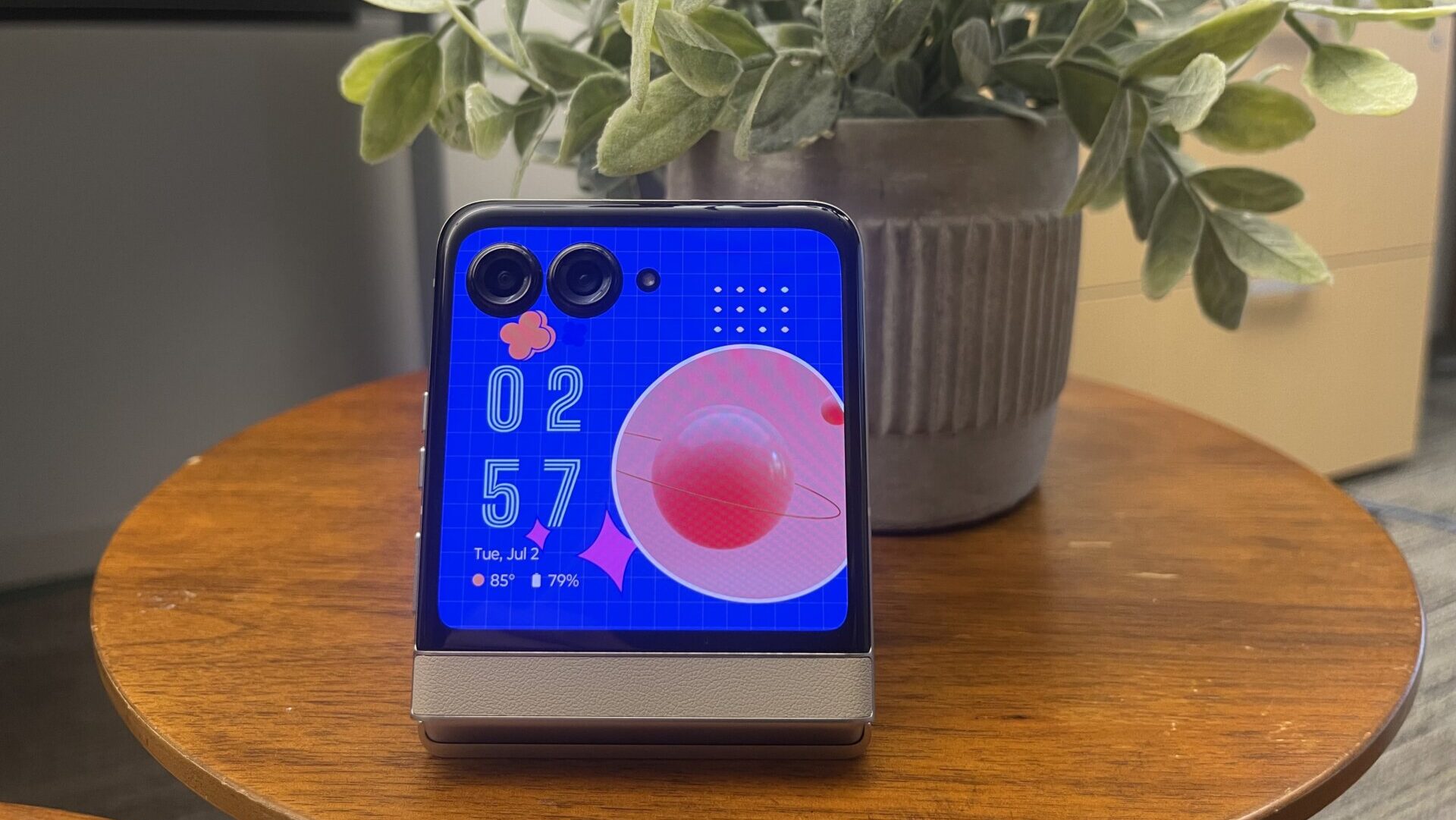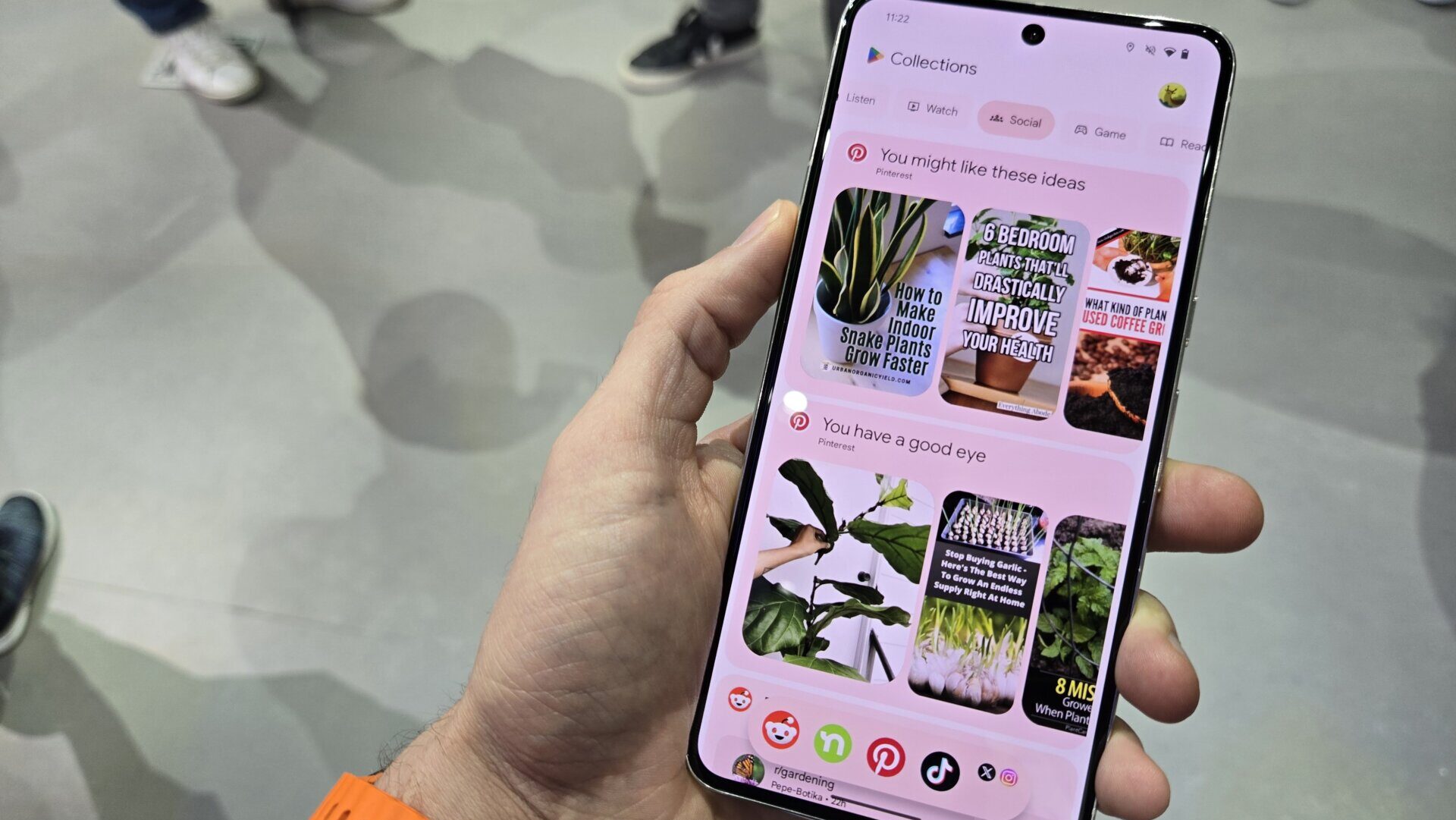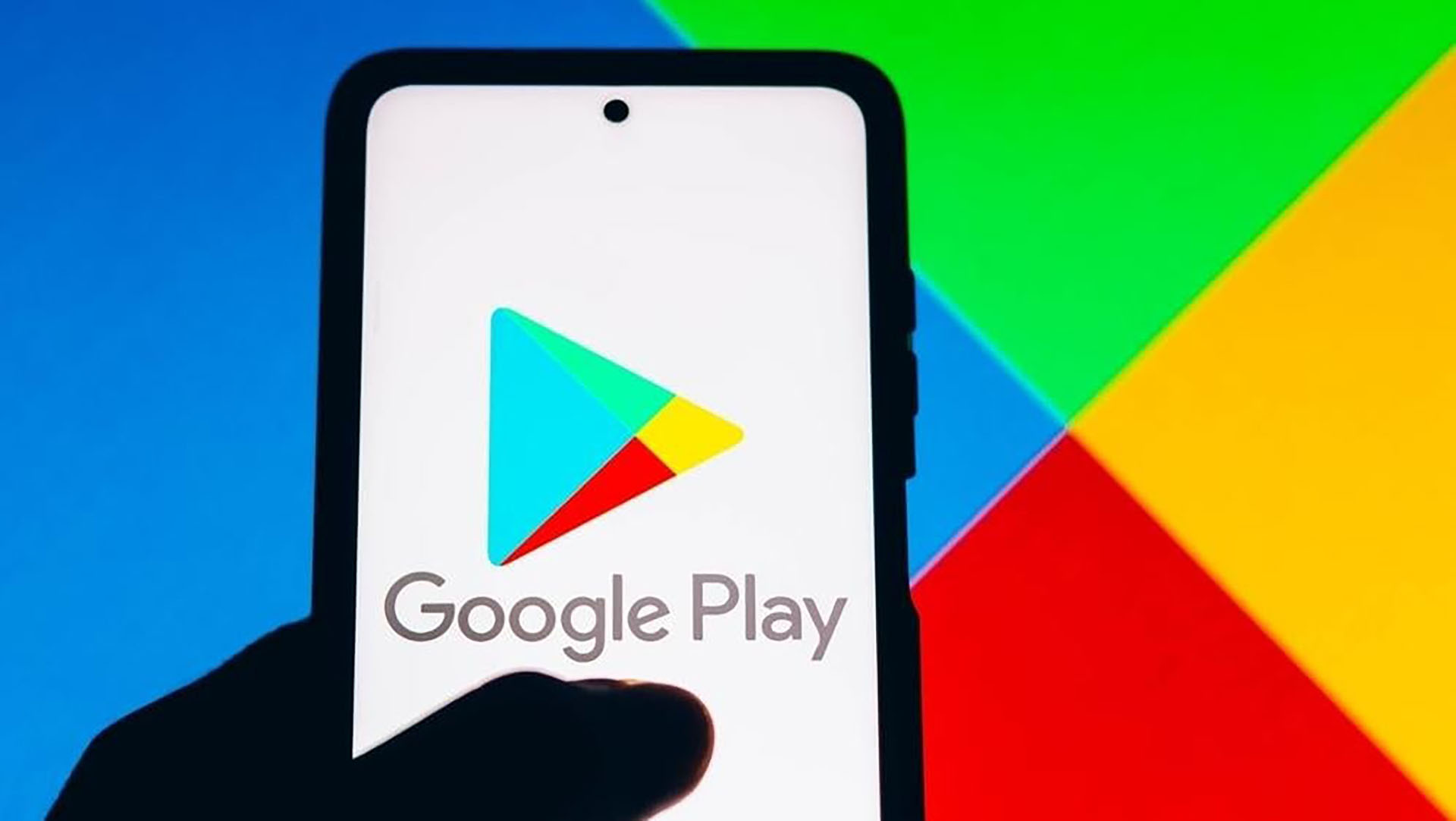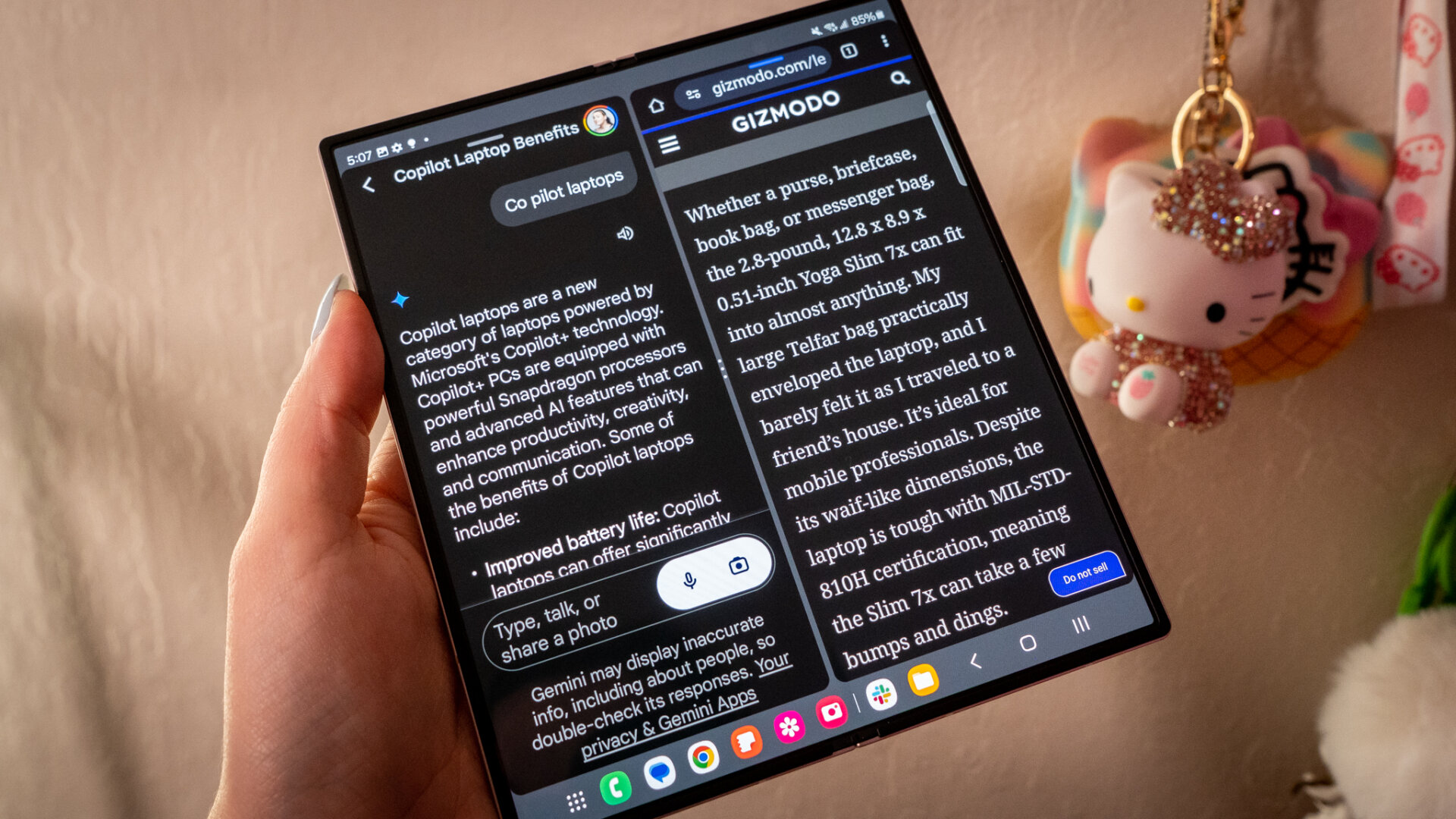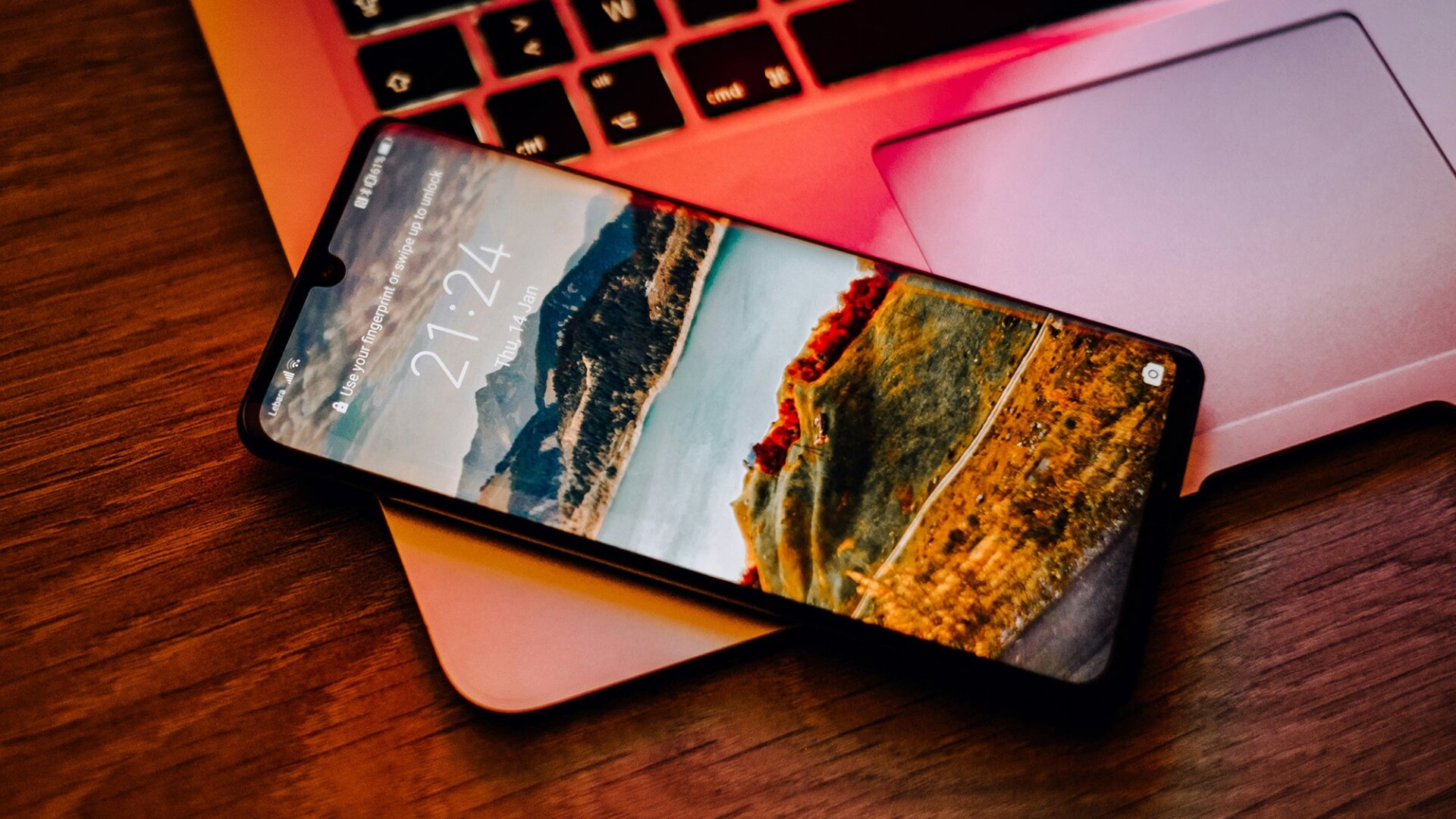Sporting the largest exterior screen we’ve ever seen on a flip foldable; the Motorola Razr might be on the verge of a dramatic comeback. The $700 Moto Razr released last year didn’t quite light the world on fire. This was mainly due to its small exterior screen, lack of water resistance, and poor low-light camera performance. We did a face-off of the phone’s pricier, more premium sibling, the $1,000 Moto Razr+ 2023, and the $1,000 Samsung Galaxy Z Flip 5, and picked Samsung as the winner.
Motorola improved from last year’s design and slapped on a nice 4-inch outer display on 2024’s Razr+ and a 3.6-inch screen on the Razr. No other foldable on the market currently features four inches of screen real estate as the external display, immediately giving Motorola a real contender in the foldable space. We saw a 3.6-inch external display on the company’s 2023 offerings, which was reserved for the $1000 Razr+, so the $700 Razr having it this year is impressive.
The new Razr also offers an entirely different chip, a handful of new gestures, the Gemini AI voice assistant, and improved water resistance, among a host of new features. It feels wrong even to use 2023’s Razr as a point of comparison; that’s how much this foldable has evolved in just a year.
Pros
-
- Negligible crease and improved hinge
- CPU can handle multi-tasking
- The external display is actually useful
Cons
- Lower dust resistance rating
- Mediocre camera with poor low-light shots
Motorola Razr Display
The external display lets you do everything and easily switch to the main display.
I used the external display way more than I thought I would. And it makes sense, too. It’s a beautiful pOLED display with a 1056 x 1066 resolution and HDR10+. I used it for casual nightly watching on YouTube, some light gaming, checking Slack notifications, catching up on emails, taking pictures, and messing around on Gemini AI–which is probably a list of everything I use my phone for.
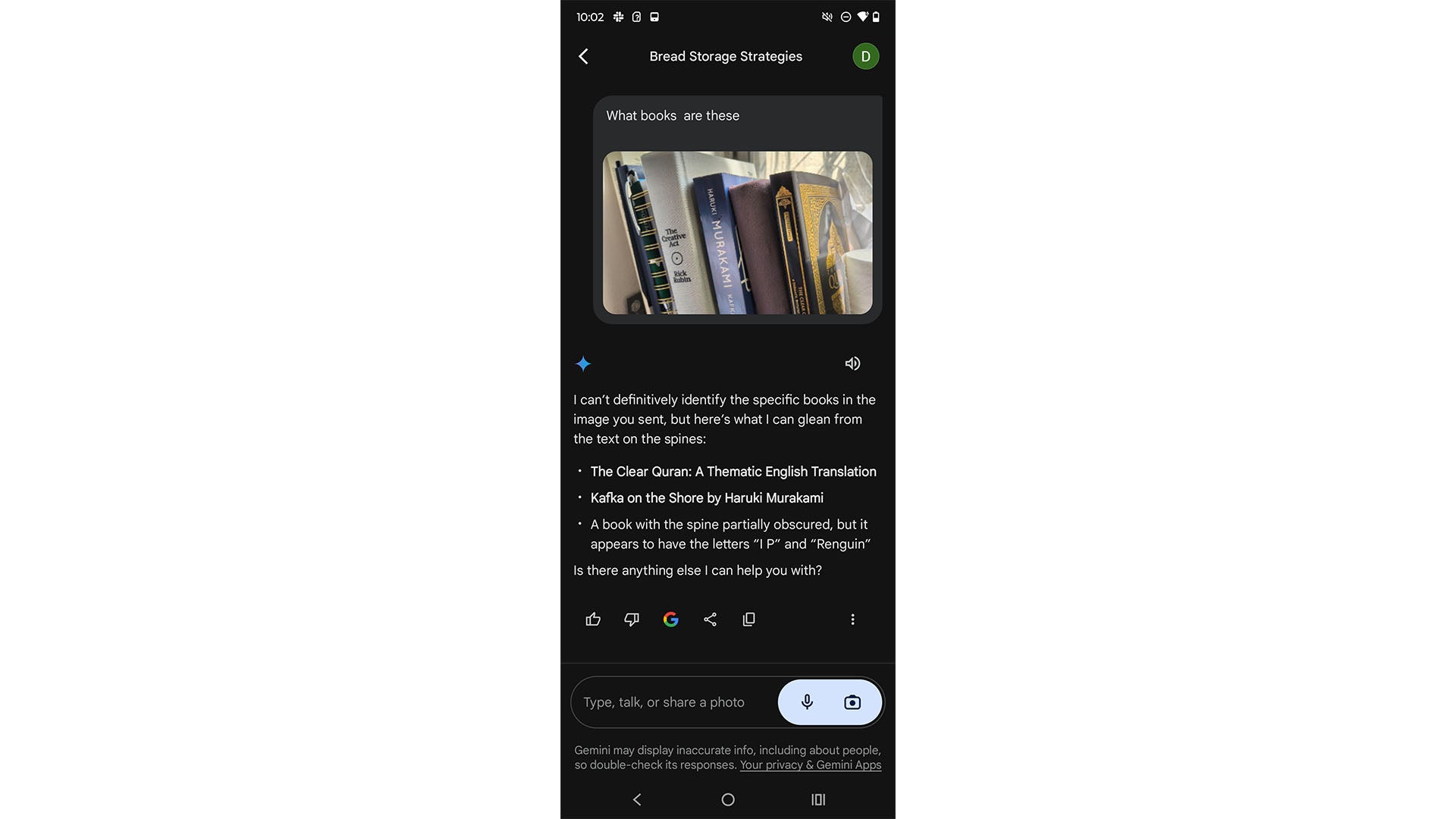
The Razr wraps all your apps around the lenses to offer more space. However, not all apps are optimized for a 4-inch display, which renders some partially useless. For instance, the lenses obstruct the Skip Ads button on YouTube and some of Slack’s bottom bar icons. The good thing about this year’s release is that your apps cannot appear on the external screen in full-screen mode. Doing so and picking the alternative Default Mode instead will make your app show up a little square away from the lenses and any other hardware that can obstruct it.
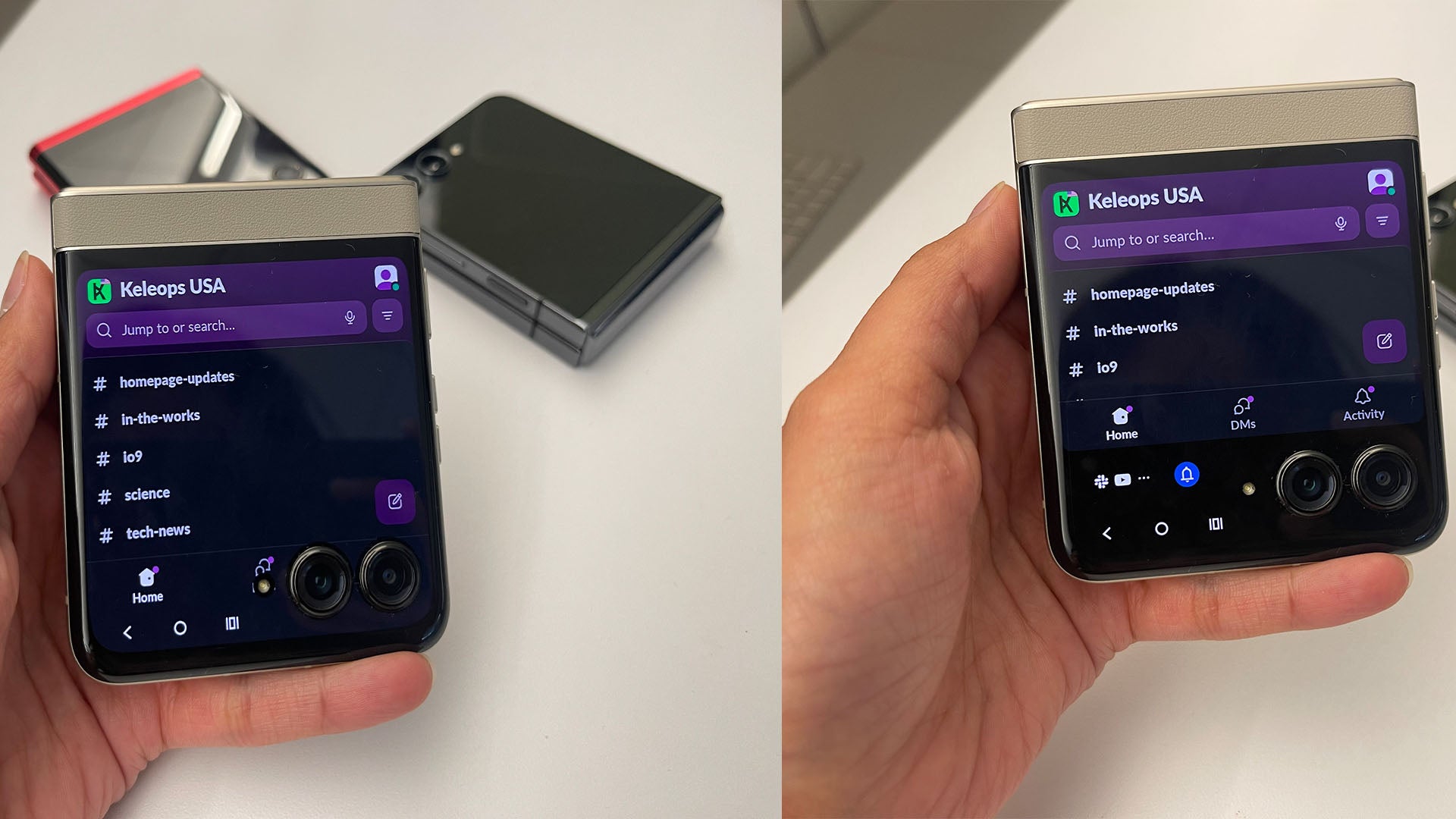
YouTube looked just fine on Default Mode. I didn’t mind a slightly trimmed screen in exchange for not having any features blocked. I occasionally switched to Default Mode on Slack and Gmail when required. The Full Screen Mode left the app utterly useless on Instagram, with all the most important functionality hidden. The Default Mode was extremely exhausting since I had to scroll three times to see one entire post from top to bottom.
Playing Scooter Xtreme and Retro Drift on the smaller screen was fine, but I had to switch to the regular 6.9-inch screen for better gameplay for Perfect Piano. All these are games the Razr had already installed on it, and spending hours on the 90Hz outer screen was a delight.
On 2023’s Razr, I saw complaints about the main display not reading the actions of the external display. Allison Johnson at The Verge set a timer on the cover screen, but it was nowhere to be found on the main screen. I tested the 2024 version for continuity with a timer, YouTube, and multiple games, and the main display could resume everything for me. It picked up my Perfect Piano exactly where I left off on its almost 7-inch panel with a 120Hz refresh rate, though I couldn’t tell the 30Hz difference. YouTube videos appeared crisp, detailed, and sharp on the FHD+ main display with a 2640 x 1080 resolution, HDR10+, and 3000 nits of brightness.
Motorola Razr Design
An upgraded hinge but downgraded dust resistance.
I complained about the hinge on last year’s Razr+ being too tight. You had to pry the phone open instead of flipping it open. The hinge springs were also less than ideal, making the device quickly open out with a loud and harsh jerk. I’m glad both of these issues have been fixed with the new Razr.
One of the first things I noticed when I started playing around on the phone was its now perfect hinge. It’s not tight enough to be a hassle or loose enough to feel flimsy. It’s at the Goldilocks level of comfort. The opening and closing of the phone are also much more controlled and precise, instead of a sudden, sharp jerk. It opens regularly and evenly and closes with a satisfying click. However, how well the hinge performs over time is something at least a year-long test can tell. So, even though the hinge works perfectly right now, that could change after the 10,000th time I’ve opened it. Only time will tell.
Motorola does a fantastic job hiding the crease. You’d hardly see it when using its main 6.9-inch display. A tiny dip in the center is only noticeable if light hits your phone at a certain angle. I’d go as far as to say that on the new Razr, it’s pretty easy to forget you’re using a foldable.
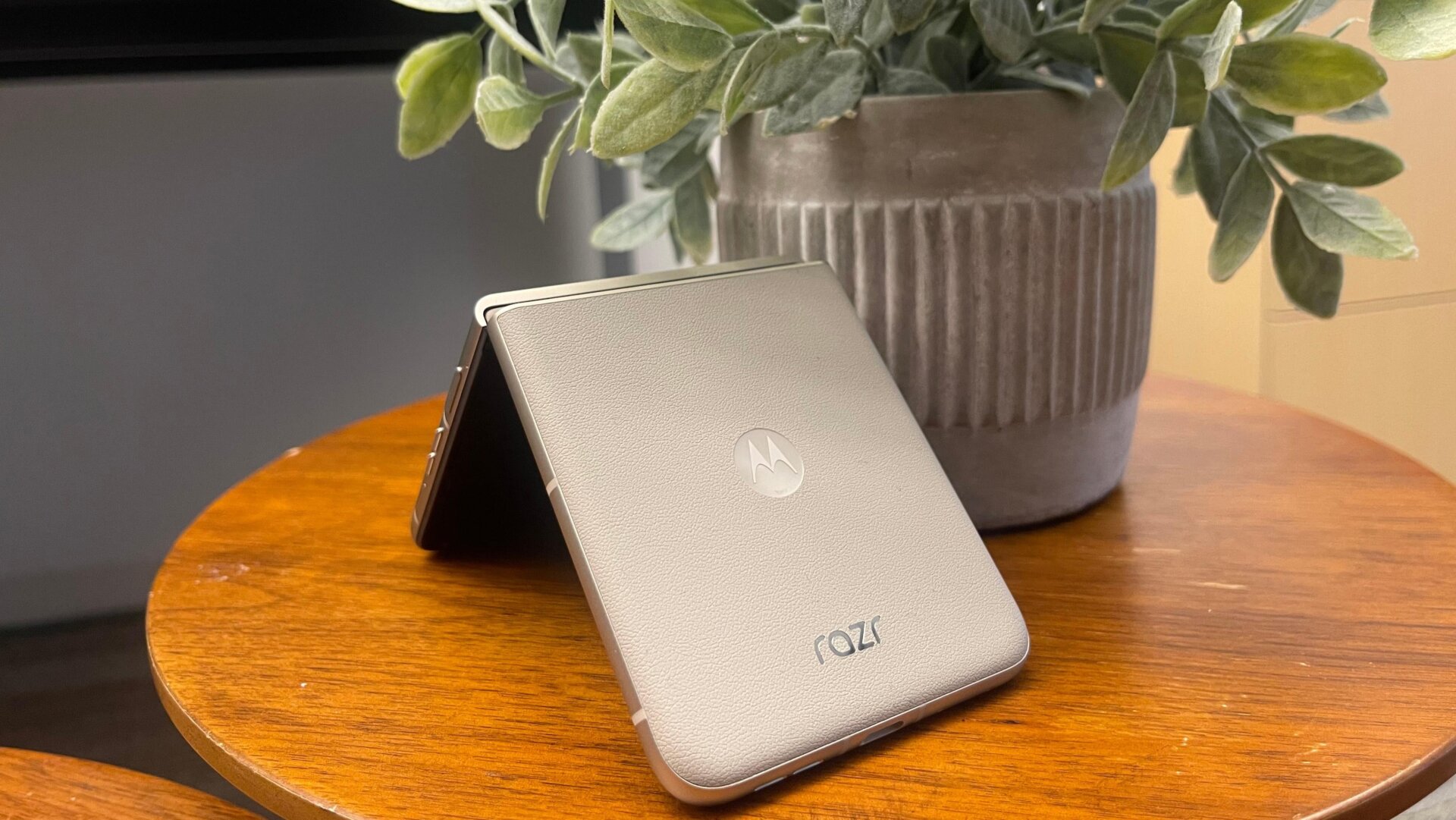
The phone is coated in Corning Gorilla Glass on the front and “vegan leather” on the back, supported by high-strength aluminum on the sides. Weighing 188g, it weighs around the same as the previous generation. I received a beautiful ‘Beach Sand’ review unit, but there’s also a Koala Grey and Spritz Orange, which I have mixed feelings about, but my other coworkers seem to dig the color.
The Razr went from an IP52 rating on the 2023 model to an IPX8 on this year’s iteration. While it improved the water resistance score, it significantly downgraded dust resistance, one of the most crucial factors on a foldable phone. Since there are hinges and crevices to mind, a foldable phone should withstand dust and other air particles. The real test of a foldable phone is how it fares over time, so I’m pretty concerned about how its dust resistance will hold up against the environment after a few months.
Motorola Razr Performance
A MediaTek chip capable of handling your multitasking needs.
This is one of the areas in which the newly launched Razr and Razr+ significantly differ. A Snapdragon 8s Gen 3 chip powers the premium model, while the Razr runs on a MediaTek Dimensity 7300X processor. I haven’t had the chance to use the new Razr+ yet, but I have vast experience with 2023’s Razr+, which sports a Snapdragon 8+ Gen 1 CPU. Having used a Snapdragon and MediaTek-powered Moto Razr, I can safely say you’re not missing out on using the cheaper $700 version.
During my week-long testing, I didn’t encounter a single hiccup or stutter, which is my experience with the Snapdragon chip. I multitasked between Gmail, Slack, and Chrome on some days. On other days, I played games and alternated that with quick YouTube videos, and I didn’t feel any heating-up issues. Switching between apps is fast and smooth, and multitasking is a breeze. It scored 1051 on the Geekbench 6 single-core test and 2997 on multi-core, which puts it close to the OnePlus 12, which retails for $800.
The latest Android version, Android 14, is the OS on the device, which is a relief to see, considering Motorola doesn’t have the best track record of releasing updates on time. My Razr+ from 2023 is still running the outdated Android 13. Motorola promises three Android upgrades and four years of security patches, so it’s relatively future-proof but not as impressive as Samsung’s four years of major OS updates and a five-year window of security updates.
The new Moto Razr ships with 8GB LPDDR4X and 256GB of built-in storage, slightly less memory than the 12GB LPDDR5X on the new Razr+.
Motorola Razr UI and Gestures
Adding apps to the external screen is a breeze. We have new gestures.
Unlike the external screen on last year’s Razr, which was more of a display for widgets, this year’s offering has a full display designed to work exactly as the main one. A simple pen icon at the top right of the cover screen allows you to add any app you want to it. There’s no launcher widget like on the Z Flip 5; you tap on an app to make it a part of your outer screen.
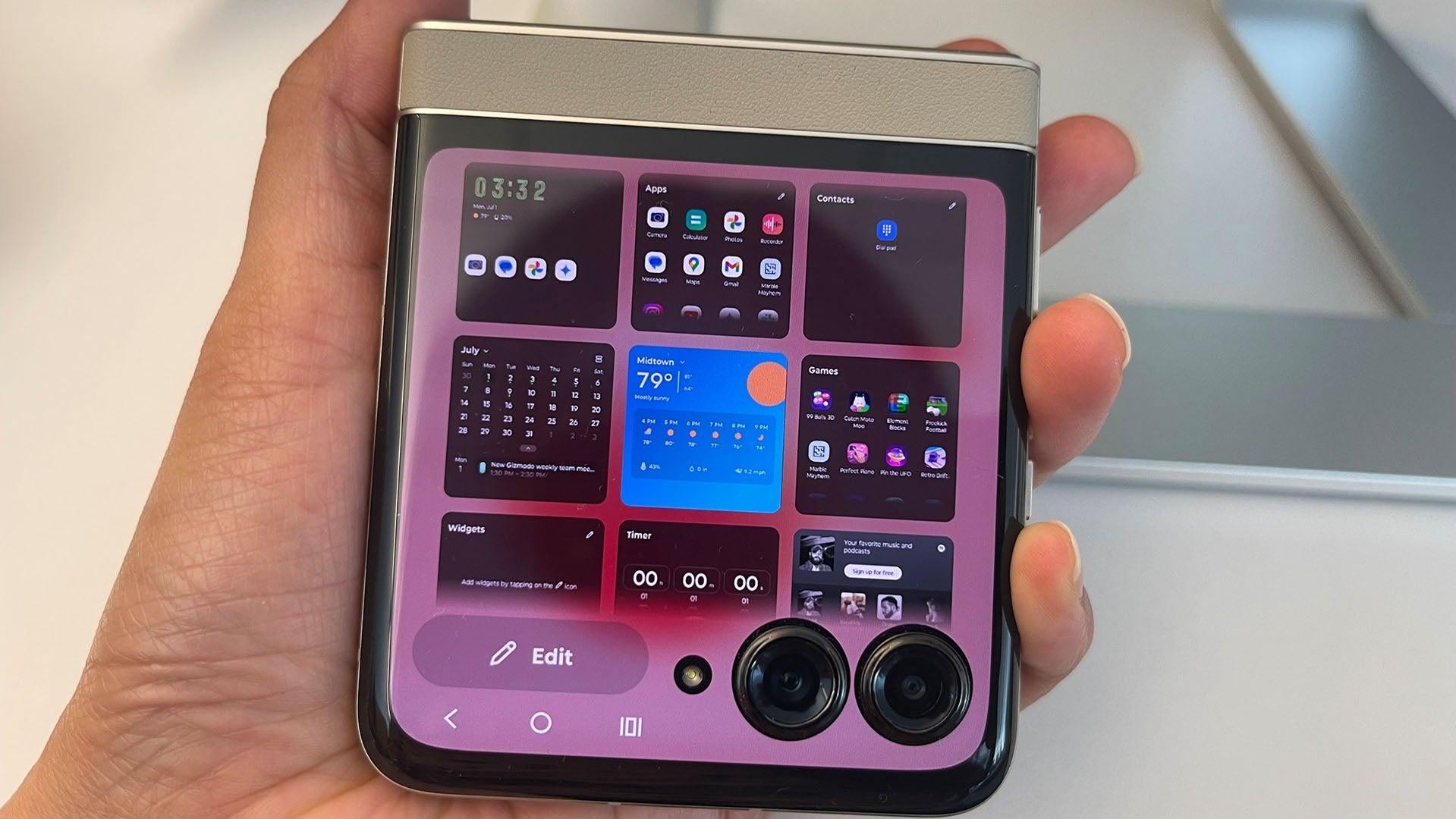
You can scroll through your outer screen pages or pinch at them to quickly navigate to a specific one. You can also add a few services like Google Stocks, Stopwatch, and Spotify as widgets on a separate page on your external screen. Swiping down on the screen displays a plethora of quick settings—honestly, more than you’ll ever need.
It was easy to personalize the phone. The outer screen features themes, fonts, and color options that are pretty easy to change. It took me just a few seconds to do it, and I couldn’t stop appreciating how cute the lock and home screens looked.
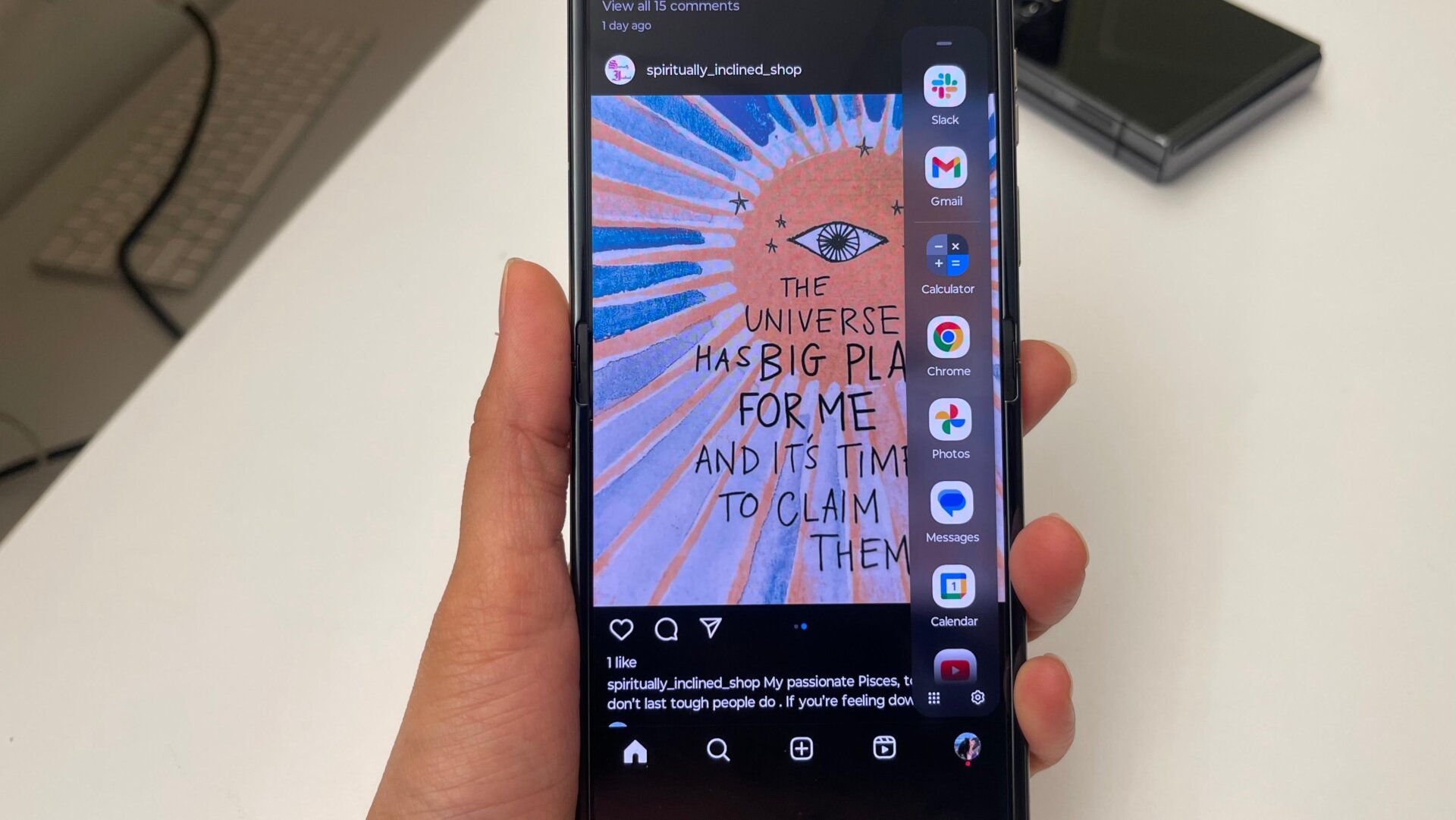
The newly added quick launch lets you tap the back of the screen twice to launch an app you can pick in Settings, along with tap strength. You can now also slide up and down on the power key and choose from one of the two: swiping once would display notifications and twice would reveal quick settings, OR sliding up and down would zoom in and out on camera, maps, photos, and other compatible apps. You can also pick slide sensitivity to avoid accidental swipes. I thought I’d find this gesture a lot more useful than I did. The power key is easy to press, and the sliding gesture often results in an accidental keypress. The zooming also wasn’t as smooth as I’d liked it to be.
Holding the power key enables Gemini AI, which I turned to several times during testing. Though I didn’t use a cellular network on this phone and didn’t get to try these out myself, I can bring my hand closer to the screen to silence an incoming call and flip the phone over to enable DND.
Motorola Razr Camera
Massively underwhelming low-light photography.
Motorola again gave us an utterly underwhelming camera on this year’s Razr. The new Razr sports a 50MP main rear camera with a second ultra-wide 13MP rear camera. The front camera offers 32MP. All cameras shoot in 4K UHD at 30fps and in FHD at 60fps. I messed around with the camera at home and on my commute to work. While the night shots were particularly bad, I wouldn’t say I was impressed with even day shots. Zooming in made my photos lose a tremendous amount of clarity and made them look visually noisy.
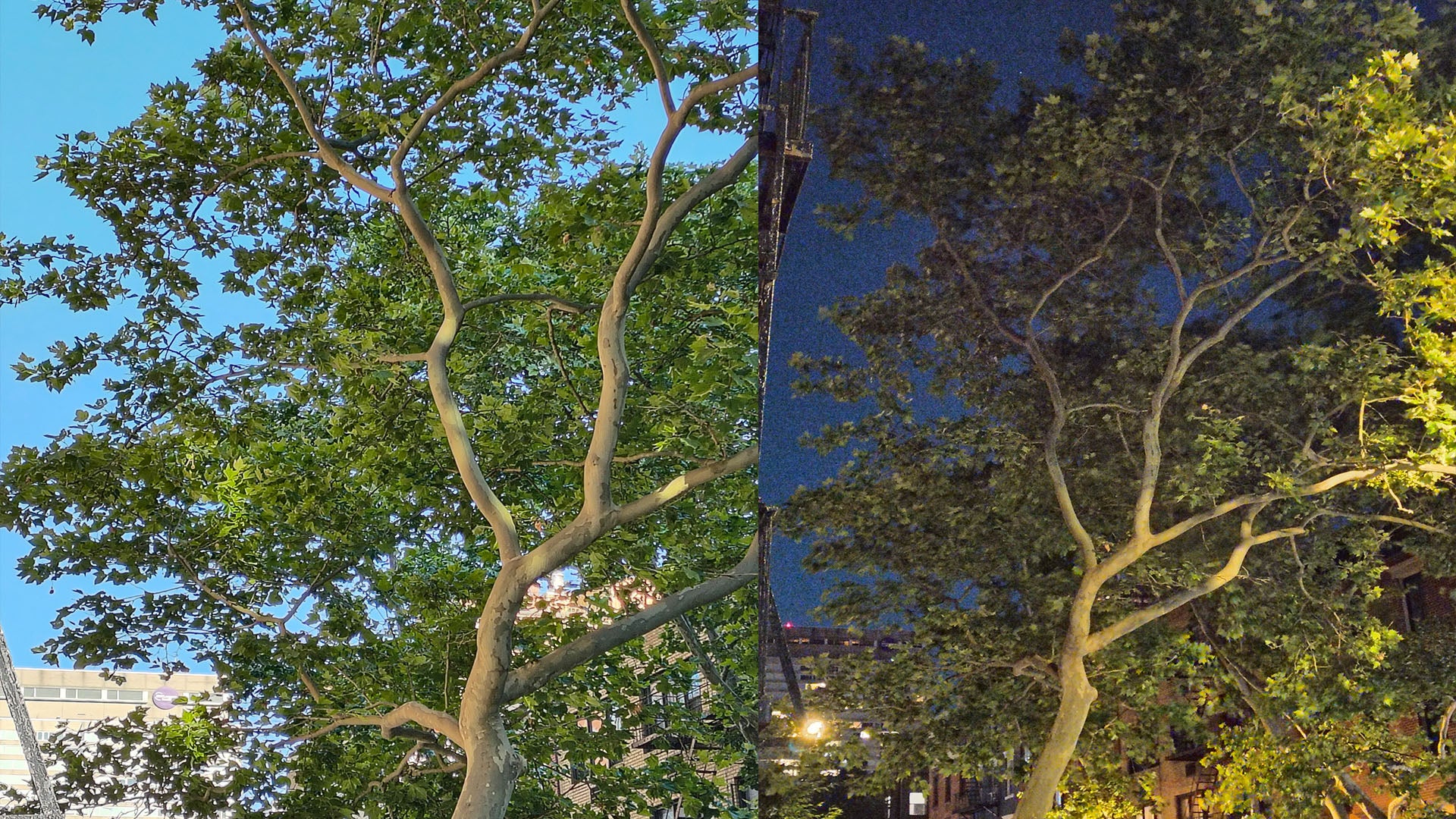
The night shots were a complete mess. They came out muddled and lacked sharpness, clarity, and detail. To overcompensate for the less-than-ideal lens, the photos featured oversharpening in some areas, which made them look even worse.
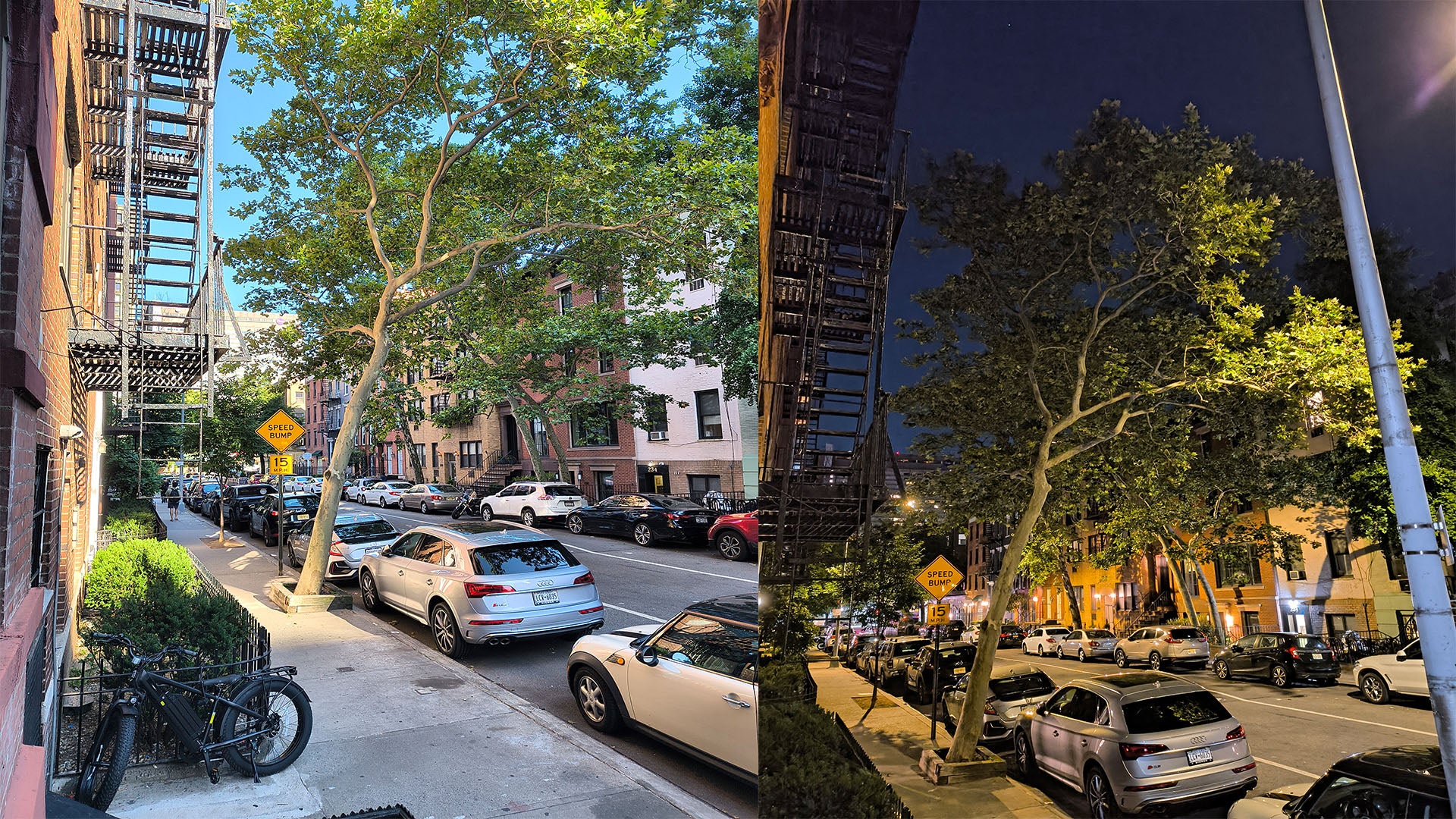
The only good thing about this year’s camera is that it sports deeper lenses that protrude more than last year’s version. This ensured I wasn’t accidentally tapping it as I used my cover screen, which helped prevent smudges and scratches.
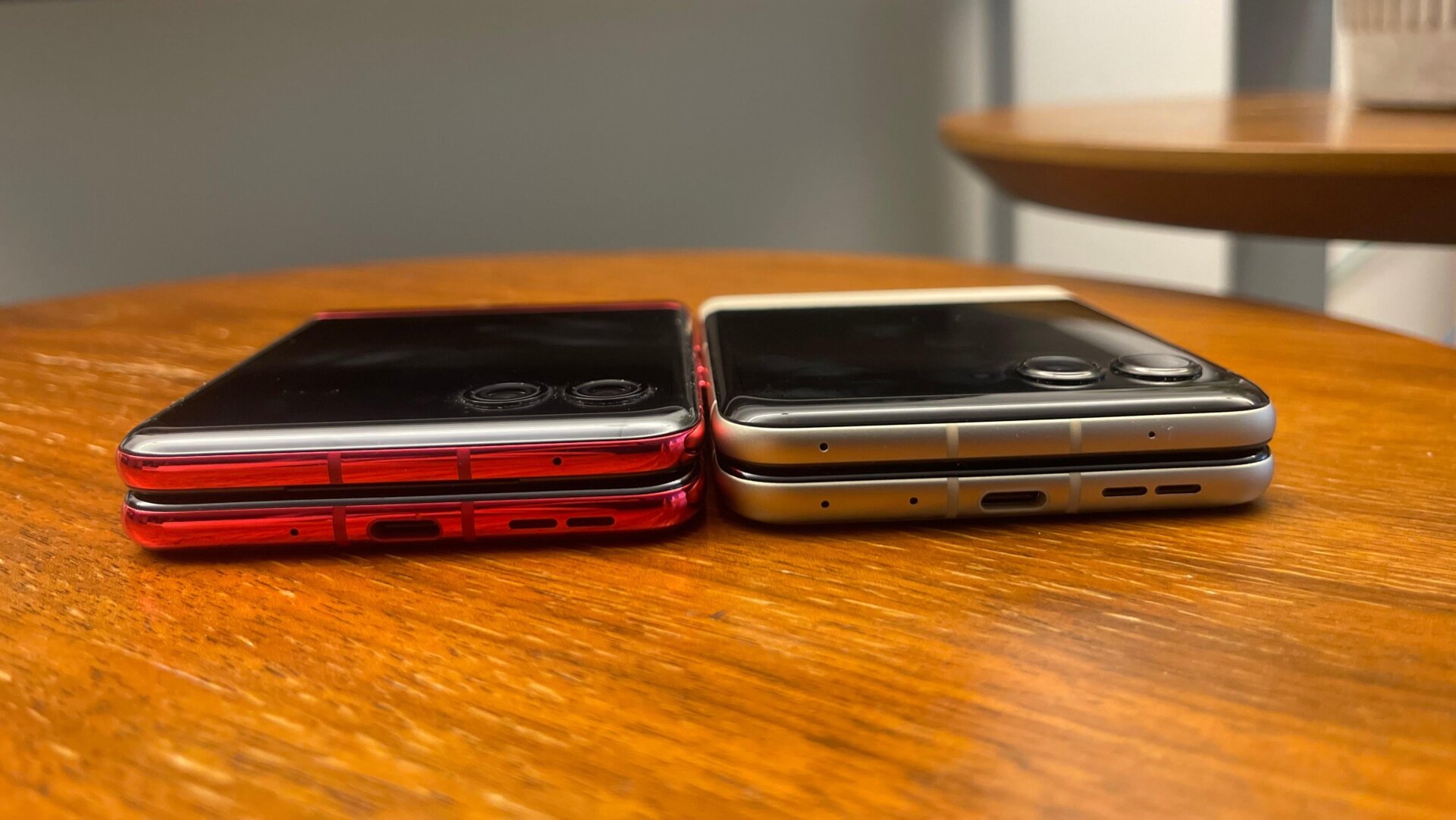
Motorola Razr Battery and Speakers
An all-day battery and loud, room-filling sound.
The Razr’s 4200mAh battery easily lasted two days of moderate and a day and a half of heavy usage. After using it for productivity, entertainment, and gaming from time to time in a 16-hour day, I would still have around 40% juice left. I never found myself tethered to a socket or complaining about the battery on this device. Once it was fully charged within an hour, it lasted at least 11 hours. All my testing was done on 50% brightness and with the low power mode off. I am currently battery testing and will update this story with exact figures soon.
A 30W power brick charges the phone, though you have to buy it separately. I blame Apple for starting this. There’s also 15W wireless charging support, which I’m thrilled with, as its predecessor offered ridiculously slow 5W wireless charging.
The onboard audio is handled by a pair of stereo speakers with Dolby Atmos featuring Spatial Sound. I don’t remember cranking the volume, even once during testing. Around 70-80% was enough to fill my room with sound. Like all phone speakers, the sound is more tinny than bass-heavy.
Motorola Razr Verdict
Score: 3.5/5
All in all, except for the underwhelming camera and the absence of dust resistance, the new Moto Razr is a solid deal for just $700. The external display is far from a gimmick and is actually useful. It provides sufficient real estate and an easy UI to add any apps you want. The newly-added Default Mode ensures that apps not optimized for a 3.6-inch screen also run perfectly.
Design-wise, it aced the crease and improved the hinge, but the serious lack of dust resistance, considering it’s crucial on a foldable, is concerning. Performance-wise, you’re sorted, too, with the MediaTek CPU efficiently handling switching between multiple apps and the battery lasting around a day and a half to two days.
The below-average camera is a big compromise you will have to make. The only way you won’t mind its camera is if you mostly click pictures during the day. If you’re into night photography or a better camera is what you want out of your next phone upgrade, it’s best to look elsewhere.
